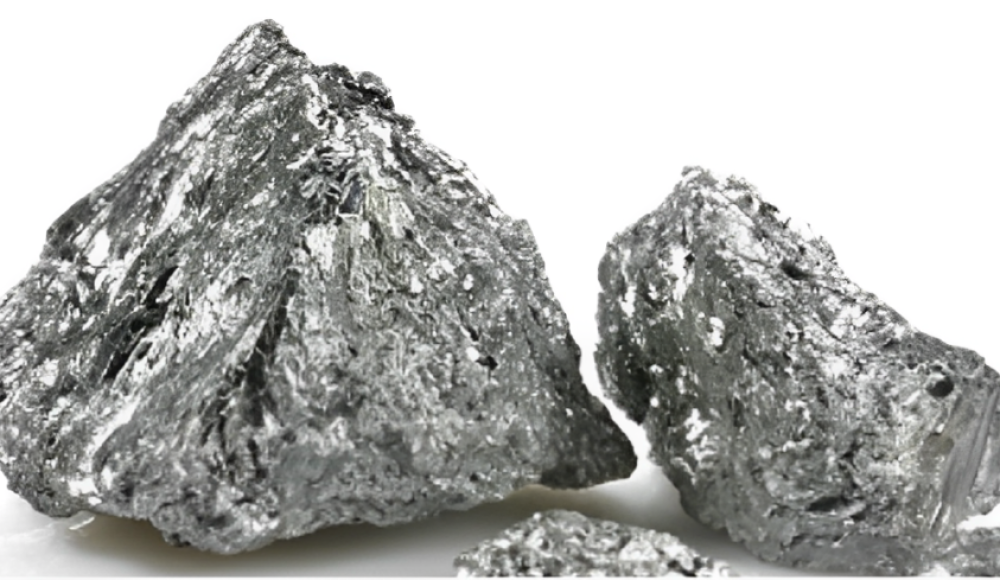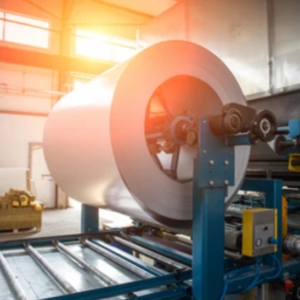One of the properties of metalloids is that fit between metals and nonmetals. That’s why, they are also called semimetals. They are also known as semiconductors. Besides this, these metalloids are located in the middle of the metals and non-metals in the periodic table. That helps us understand its different applications in numerous industries. In this article, we will discuss the ten major properties of metalloids concerning their physical and chemical features.
What are the Metalloids?
The elements that are neither metal nor non-metals and present in the periodic table are known as metalloids. These are semiconductors and are highly used in the electronic field. Besides this, these are always in solid form and offer high conductivity. Typical examples of metalloids are boron, silicon, germanium, arsenic, tellurium, antimony, polonium, astatine, and bismuth.
What are the Different Properties of Metalloids?
The metalloids provide several benefits and have many applications in different fields. So, let’s discuss the 10 major properties of Metalloids that make them unique from metals and nonmetals.
1. Metalloids Have Amphoteric Oxides
Metalloids have oxides that can act as acids and bases and are therefore called amphoteric. As a result of this dual property, they can participate in many more chemical transformations that occur in the body, thus increasing their versatility. For instance, silicon dioxide (SiO₂) can be dissolved in strong acids such as hydrofluoric acid and in strong bases, i.e. sodium hydroxide to form different products. This amphoteric property is essential in several operating processes. They require either an acidic or alkaline medium for the operation to occur.
2. Metalloids Exhibit Variable Reactivity
The ability of metalloids to perform reactions differs from one metalloid to the other in different ways. For example, Boron is a very unreactive element. Besides this, it rarely forms compounds with other elements or substances under normal circumstances. On the other hand, arsenic is very reactive and at times toxic that it combines with several other elements. Besides this, it results in the formation of several dangerous compounds. This variation in reactivity makes it possible for metalloids to be used in different fields ranging from more stable uses, i.e. frameworks and essential mechanical uses to highly reactive applications in chemical industries and biological processes.
3. Metalloids Are Used in Alloys
The use of metalloids in metals is common ending up in the creation of alloys that improve the metals’ properties. For example, when used as an alloying agent antimony assists in the hardening of lead. Moreover, it has many applications in industries, i.e. batteries, bullets, and bearings. The integration of metalloids with alloys increases various physical and chemical properties. They also help increase mechanical properties and corrosion resistance.
4. Metalloids are Solids
Non-metals can be in different states at room temperature while all metalloids are solid at room temperature. Besides this, they possess moderate to high melting points. The compounds are stable in the solid state because their atom’s electrical bonds are strong. The melting points of common metalloids are as follows;
- Boron: 2079°C
- Silicon: 1410°C
- Germanium: 938. 3°C
- Arsenic: 817°C
- Tellurium: 449. 5°C
- Antimony: 631°C
These high values of melting point demonstrate that metalloids need high heat to convert into liquids and are suitable for high-heat activity.
5. Metalloids Have a Metallic Luster
A metalloid might also have the characteristic of luster. They reflect light just like metal does though they are generally non-metals. This metallic luster is one of the features that define them as metalloids based on the physical state of matter. For example:
- Boron shows a black and lustrous appearance.
- Silicon is grey with a shiny and metallic sheen.
- Germanium has a lustrous and greyish-white surface.
- Arsenic is grey and shows metallic luster.
- Tellurium has a silvery-white surface with a metallic sheen.
- Antimony shows a bluish-white with a lustrous surface.
6. Metalloids are Brittle
In contrast to the characteristic feature of metal being easily hammered into a thin sheet or being drawn into a wire, metalloids are brittle. This means they become damaged or crushed easily when we apply force or stress and do not distort. Hence, there are restrictions to their ability. They get shapes like metals such as hammering, rolling, and other forming methods. This happens because their atomic structure is oriented in a network of rigid and well-defined geometrical planes. So, they can easily become brittle.
7. Metalloids Conduct Electricity
Metalloids are good conductors of electricity though not as good as metals. They have a middle-range electrical conductivity that greatly varies with the help of temperature and impurities. Due to this semi-conductive behavior, these elements have a critical place in electronics. They have numerous applications in transistors and diodes. A process known as doping that helps improve the electrical conductivity of semiconductors. For example, silicon when combined with phosphor or boron becomes more suitable for conductivity applications.
8. Metalloids Form Covalent Bonds
Some of the metalloids easily engage in covalent bonding. They share electrons with other atoms to attain stability. This bonding type is characteristic for non-metals and with their help, metalloids can form various compositions. Frequently, they can adopt different oxidation numbers, thus they are widely used in several chemical processes. For example:
- Boron: +3, +2, +1
- Silicon: +4, 0
- Germanium: +2, +4
- Arsenic: +3, +5
- Tellurium: +4, +6
- Antimony: +3, +5
This tendency to accept or give away electrons in more than one way allows metalloids to participate in both reduction and oxidation processes. They can form a variety of compounds that are characterized by a rather different range of properties. Due to flexibility, they are useful in numerous industrial and technology uses. These may include semiconductors where the purity of the chemical is a priority.
9. Metalloids have Intermediate Values of Ionization Energies and Electronegativities.
Metalloid’s ionization energies and electronegativities between metals and non-metals. This ionization energy helps them remove an electron from an atom while their electronegativity helps attract other electrons. These intermediate values enable the metalloids to display characteristics of both the metals and nonmetals categories.
10. Metalloids have Amphoteric Oxides
Metalloids dissolve in acids and alkalies and form oxides get the properties of both acids and alkalies. That’s why, they are popular as amphoteric. Moreover, metalloids can take part in numerous reactions. These Amphoteric oxides react with both acids and alkalis to give salt and water.
So, the following table will help us understand the values of metalloids concerning their physical and chemical properties.
| Element | Symbol | Atomic Number | Atomic Mass (u) | Density (g/cm³) | Melting Point (°C) | Boiling Point (°C) | Electrical Conductivity (S/m) | Common Oxidation States | Main Uses |
| Boron | B | 5 | 10.81 | 2.34 | 2076 | 3927 | ~1.0 x 10⁵ | +3 | Glass, ceramics, detergents |
| Silicon | Si | 14 | 28.09 | 2.33 | 1414 | 3265 | 1.56 x 10⁻³ | +4, -4 | Semiconductors, solar cells |
| Germanium | Ge | 32 | 72.63 | 5.32 | 938.3 | 2833 | 2.17 | +4, +2 | Semiconductors, fiber optics |
| Arsenic | As | 33 | 74.92 | 5.73 | 817 (sublimes) | 614 (sublimes) | ~3.0 x 10⁴ | +5, +3, -3 | Pesticides, wood preservatives |
| Antimony | Sb | 51 | 121.76 | 6.68 | 630.6 | 1587 | ~2.5 x 10⁵ | +3, +5 | Flame retardants, alloys |
| Tellurium | Te | 52 | 127.60 | 6.24 | 449.5 | 988 | ~1.0 x 10⁻⁶ | -2, +4, +6 | Thermoelectric devices, metallurgy |
| Polonium | Po | 84 | 209 | 9.32 | 254 | 962 | Not well-defined due to rarity | +2, +4 | Rarely used, highly radioactive |
Conclusion
In conclusion, the properties of metalloids are a blend of metallic and nonmetallic characteristics. They’re mainly solid at room temperature and have a shiny surface. These are generally brittle and conduct electricity. Moreover, they can form covalent bonds and exhibit multiple oxidation states. This allows them to participate in a variety of chemical reactions. Metalloids have intermediate ionization energies and electronegativities, positioning them between metals and nonmetals in terms of reactivity. So, by considering these properties of metalloids, they have many applications in various industries.
Frequently Asked Questions
Q1. Why are metalloids important in the electronics industry?
Some metalloids such as silicon and germanium exhibit semiconducting properties. That’s why they’re beneficial for industries in producing electronic items. These items can be computer chips, transistors, and solar cells.
Q2. What makes metalloids different from metals and nonmetals?
Metalloids are elements having properties that are intermediate between metals and nonmetals. They can pass on electricity though not as effectively as metals. Besides this, they bond covalently just like the non-metals. Like metals, they also possess a metallic appearance but are very much solid and brittle.
Q3. Can metalloids form compounds with other elements?
Yes, two metalloids can form several other compounds as they maintain more than one valence and form covalent bonds. Due to this, they are applied in chemical reactions and industries.
Contact us for more information.








